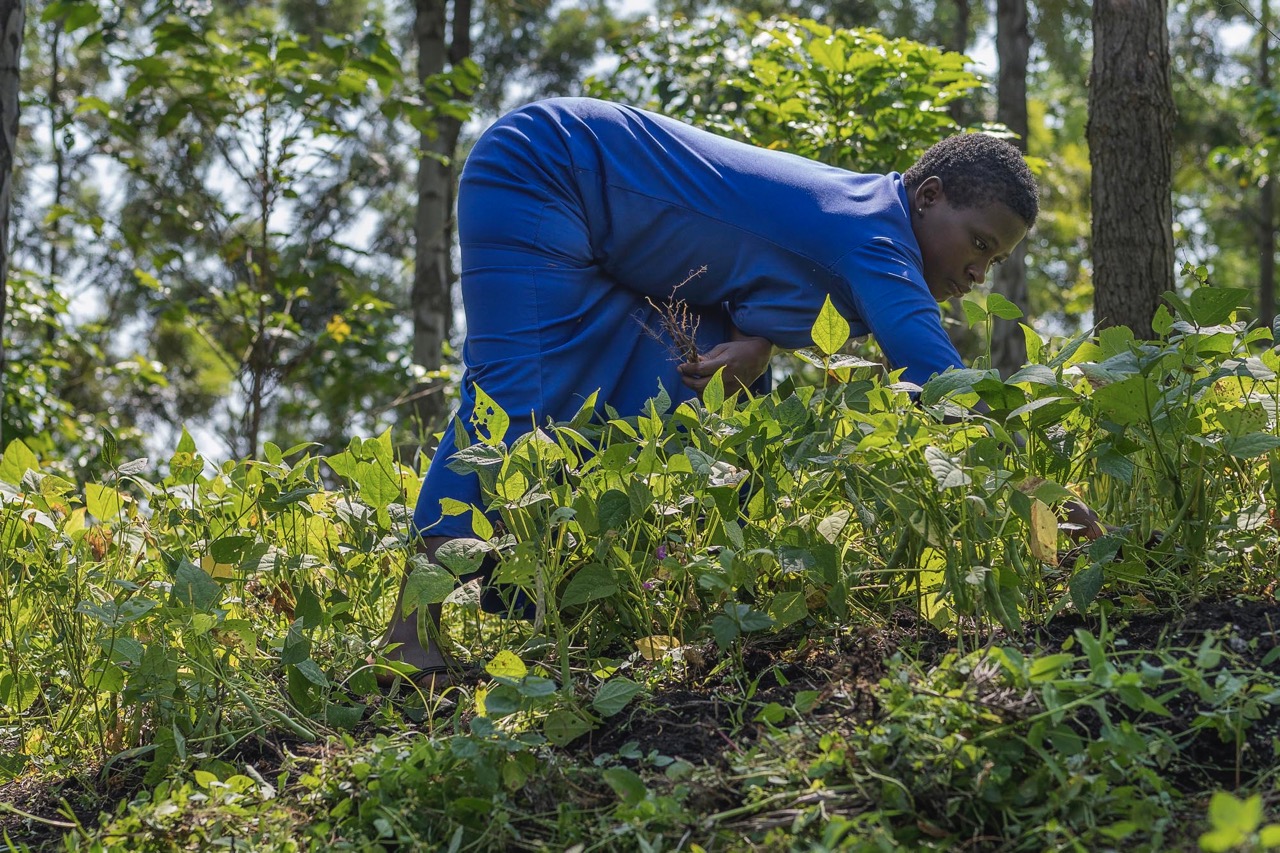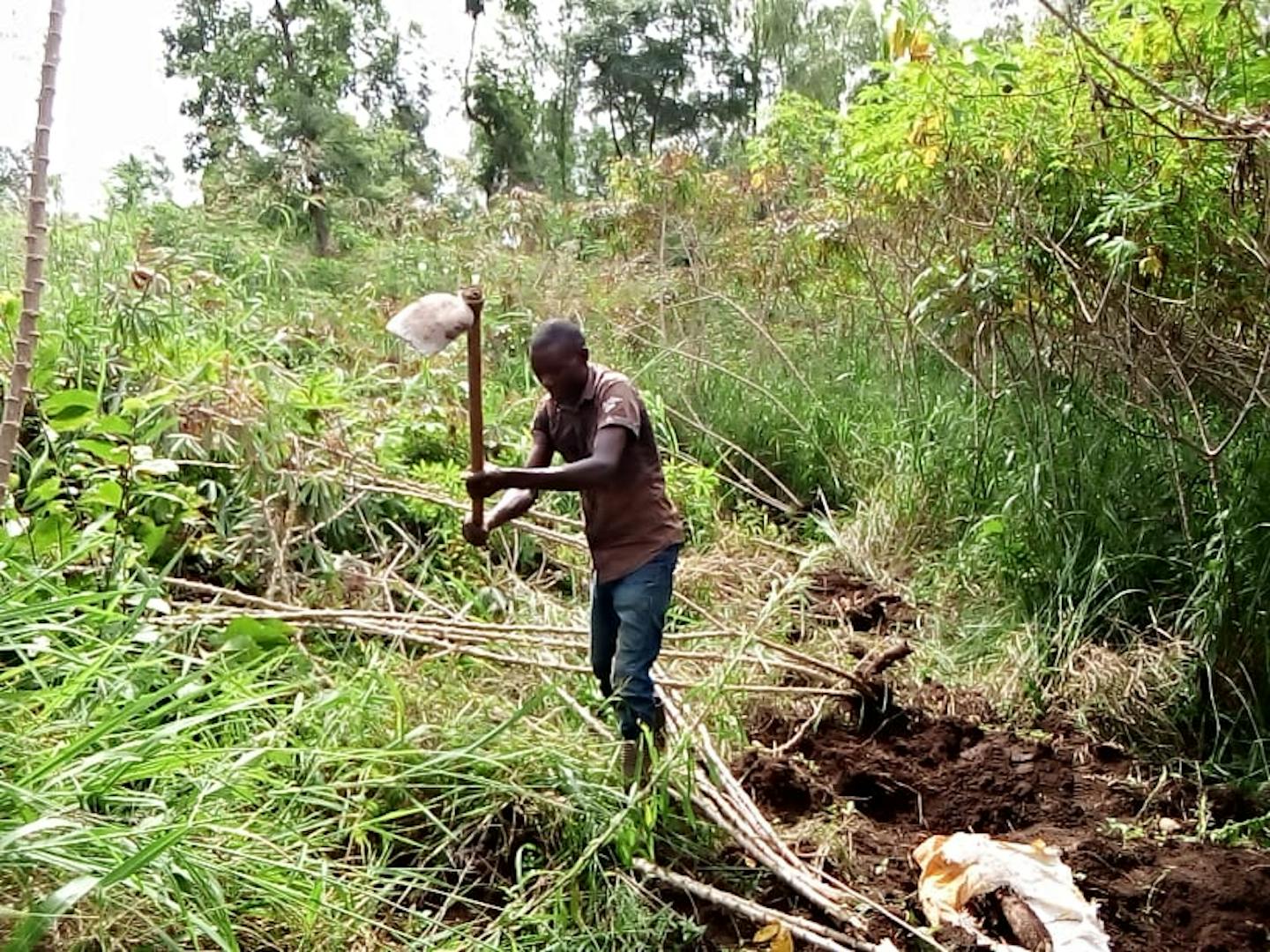How a village in Uganda is protecting soils from climate change
In the last few years, Henry Kalumba, a smallholder farmer in Kkanya village, located in Central Uganda’s Mityana District, began noticing a change of color in his farm’s soil.
Instead of its usual dark brown, the soil had become yellowish, an indicator of low nutrients. The texture was slowly becoming cracked, dry, and dusty. With every month, more farms in the community saw the same decline.
Implementing agroecology in Kkanya
Having no other option but to adapt, Kalumba and other community members joined forces to integrate agroecological practices into their farms. This method prevents the soils from turning into a desert, a process fueled by climate change.
Agroecology is a production system that considers the interaction between plants and animals, diversifies crops on farms, regenerates soils, and uses organic fertilizers in food systems.
So far, around 30 household smallholder farms in Kkanya have adapted their production to agroecology, as it has proven to be efficient, cost-effective, and affordable for farmers. “We are now growing and maintaining food forests, not gardens’’ says Kalumba.
Fighting a changing climate
Kkanya is located in Uganda’s cattle corridor, which covers approximately 40% of Uganda's land surface and highly depends on agriculture. However, climate change and other human disturbances have posed a significant threat to local communities.
“In the recent past, we have observed high soil erosion and decreased soil fertility and productivity. The available options of using fertilizers and other highly commercial practices did not help,” explains Kalumba.
The corridor exhibits serious land and resource degradation driven by overgrazing, inappropriate agriculture practices, and charcoal production leading to deforestation, according to a 2016 report by the United Nations Development Programme in Uganda.
“We are working on maintaining moisture and carbon in our soils, and we are moving from chemically intensive agriculture to what our forefathers did, and we are getting better yields,” says Sarah Nangendo, a farmer and teacher in the region.

Image courtesy of Colline Saabwe
Changing their ways
The village was a beneficiary of a program implemented by the Ministry of Local Government in Uganda. The initiative organized seminars and workshops for the farmers to learn agroecology, including how to mulch, intercrop legumes with grains, and merge sustainable methods into their agriculture and livestock practices.
Through these workshops, the community learned about organic fertilization, reduced tillage, irrigation, biological pest control, and cultivar choice. However, the agroecological methods are not new to them, as Indigenous communities have long used some of these techniques. Many were abandoned in favor of monoculture production.
“When we were growing up, our grandparents and parents used to manage their own seeds and practiced mulching and intercropping. We had a mix of food items on our menu, including fruits, vegetables, and grains, and nutrition was good,” says Ms. Ikhanza, a resident of Kiwamirembe, also located in Mityana.
Kalumba and the rest of the community decided to incorporate these ideas into their farms, which has helped them to revitalize the soil’s health and improve agriculture production and resilience.
Hope for Uganda
To prevent the country from increasing hunger and poverty due to declining soil fertility, Uganda should scale up efforts to help farmers adopt regenerative systems in agriculture, many experts say.
Miriam Talwisa of the Climate Forum Uganda, a local NGO working with communities to adapt to climate change, asserts that small-scale farming communities have the potential to resist climate impacts by switching to agroecological systems. She adds that the most significant barriers are access to information, knowledge about agroecology practices, how to implement them at the local level, and financing.
“Significant financial and technical resources need to be allocated to scale up agroecological practices through building stronger movements, favorable policies, and building capacity on climate-resilient agro-ecological farming techniques,” concludes Talwisa.
Agriculture is the backbone of the Ugandan economy, with over 70% of the population involved in a certain aspect of the value chain. Rather than falling victim to the climate crisis, local communities like Kkanya are stepping up to create a paradigm shift in how they farm and interact with nature. They hope the method will spread to other growers throughout the region.



